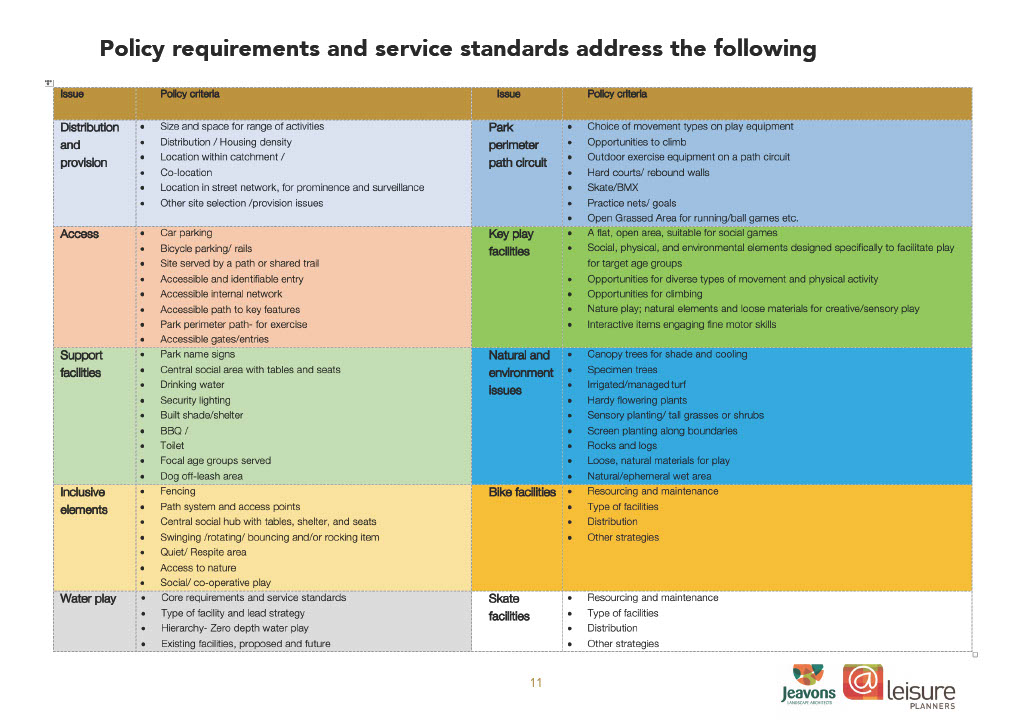Review our 10-year play space strategy
This Play Strategy reviews and updates the 2013 Play Space Strategy to ensure priorities and development standards align with the recommendations in the Open Space Strategy and the 10-year Park Upgrade Program.
The purpose of this strategy is to:
- Guide decisions regarding the provision, design and play opportunities possible across Hobsons Bay.
- Assess the existing benchmarks for play spaces by Open Space Hierarchy
- Re-examine the existing service standards for play spaces
- Consider a variety of facilities that cater for all ages and abilities, and amenities that cater for short and long duration visits.
In this strategy play spaces are those in public parks, classified as being provided for the purpose of play, and with some appropriate infrastructure provided for that purpose. This definition is not limited to play equipment alone, but the open space and landscape features associated with and purpose-built play infrastructure. This review only encompasses public facilities owned or managed by Council and does not include those provided in centres such as children’s centres or schools.
-
Read the draft strategy
Share your feedback
Play spaces defined
In this strategy play spaces are those in public parks, classified as being provided for the purpose of play, and with some appropriate infrastructure provided for that purpose. This definition is not limited to play equipment alone, but the open space and landscape features associated with and purpose-built play infrastructure. This review only encompasses public facilities owned or managed by Council and does not include those provided in centres such as children’s centres or schools.
Play spaces:
- May include facilities for skating, bike riding, water play and ball play, as well as natural areas
- Should include opportunities for cognitive, creative, social, dramatic play and physical development and provide opportunities for older people to be active and socialise with children.
- May be co-located with fitness equipment, but fitness equipment is not defined as play equipment.
Catchment hierarchy
The catchment hierarchy is used to guide provision level and development. The previous 2013 Play Strategy had two hierarchy levels: local and destination. The new Strategy proposes the hierarchy align with the Open Space Strategy and have three: Local, District and Regional. The following table explains the hierarchy:
Catchment hierarchy
Definition
Notes
Regional
Servicing an area wider than the municipality
The sphere of influence of a regional space is likely to be larger than the neighbouring suburbs, due the significance of the space or scale, and quality of features or facilities. It is expected people would travel by car from other locations, including outside the municipality. Facilities are likely to be needed to support a longer length of stay
District
Servicing a wider area than the suburb in which it is located; possibly the precinct
It is expected people would travel by car from other local suburbs to use this space.
Local
Servicing the immediate residential area within walking distance
It is expected people would walk to the park from home and would stay a relatively short time.
New classifications
A new classification type has been added since the previous Strategy: the landscape setting. These are bushland, treed park land, ornament or cultivated garden, paved area/ plaza or open grassed area or water based. This new classification seeks to add another level of diversity across existing and future spaces.
Core principles
Underpinning this municipality-wide Strategy are six core principles which will guide the future development of play:
- Diversity of opportunity and settings: offer a spectrum of opportunities for outdoor play, social interaction, and recreation
- Whole of parks for play: consider the opportunities the whole space presents to users
- Equity of distribution: access across the municipality, ideally within walking distance of 400m for all residences
- Access and inclusion: provide for people of all ages and abilities
- Environmental integrity and amenity: inclusion of trees and landscape elements and encourage contact with nature
- Play value: accommodate and foster a range of types of play
Service standards
Additionally, policies and service standards are provided for parks whose primary function is play. These policy and service standards set out the requirements and intent for each characteristic (and then any differences according to the catchment hierarchy). The standards for provision and service for each level in the hierarchy are classified into:
- Play:
- Overall provision /distribution of play spaces
- Physical access requirements of play spaces
- Social and support facilities in play spaces
- Inclusive features of play spaces
- Environmental/natural elements in play spaces
- Physical activities in play spaces
- Water elements
- Zero depth, free, non-supervised elements in play space
- Free water play in natural areas
- Stand alone zero depth or supervised splash parks
- Bike facilities in parks
- Pump tracks
- Skills areas
- Dirt jumps
- Learn to ride circuits
Precincts
The new Strategy also includes an analysis by precinct. The municipality has been divided into eight precincts:
- Altona Meadows
- Altona North/Brooklyn
- Altona/Seaholme
- Laverton
- Newport
- Seabrook
- Spotswood/South Kingsville
- Williamstown (north and south)
New works, amendments to recent work and generally improvements have been identified by site. The recommended actions by park have been outlined, with the rationale. Each of these works have been allocated a priority, and a high-level opinion of cost.
Interpreter Service
If you are a non-English seaker, you can call Hobsons Bay interpreter service for free on:
9932 1212

Contact Us
Our friendly customer service call centre is open Monday to Friday 8.30am - 5pm to assist with all enquiries
| Phone | 1300 179 944 |
|---|---|
| customerservice@hobsonsbay.vic.gov.au | |
| Website | www.hobsonsbay.vic.gov.au |







